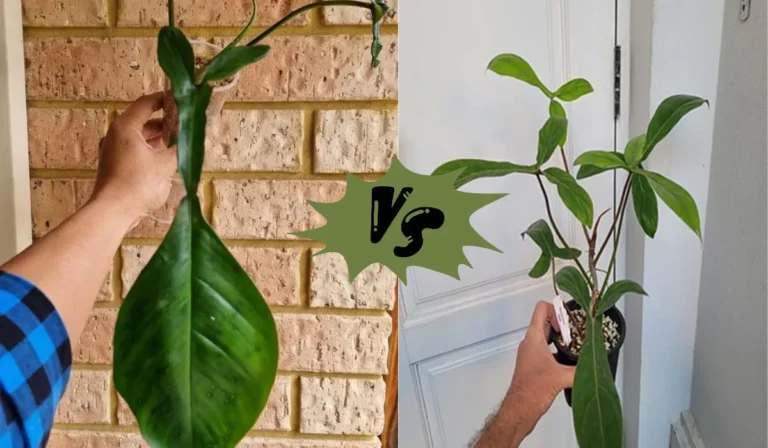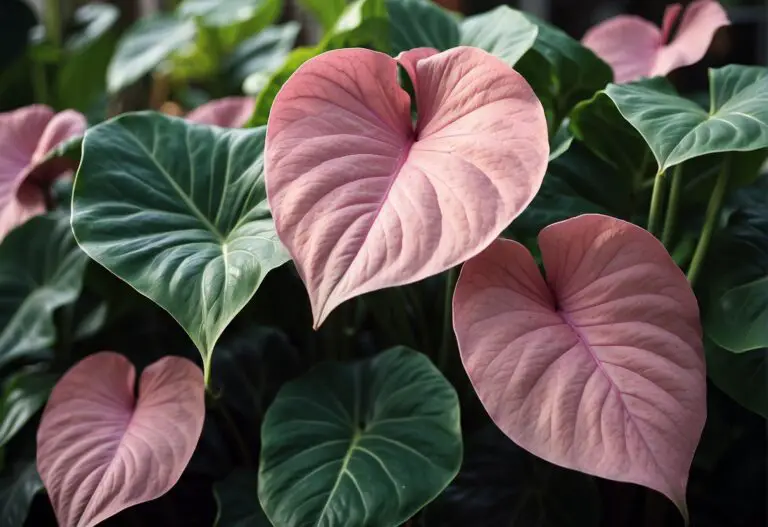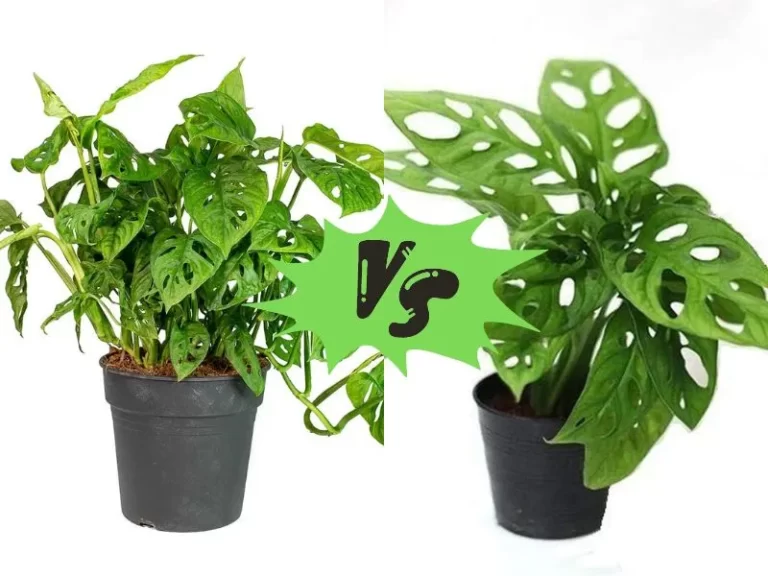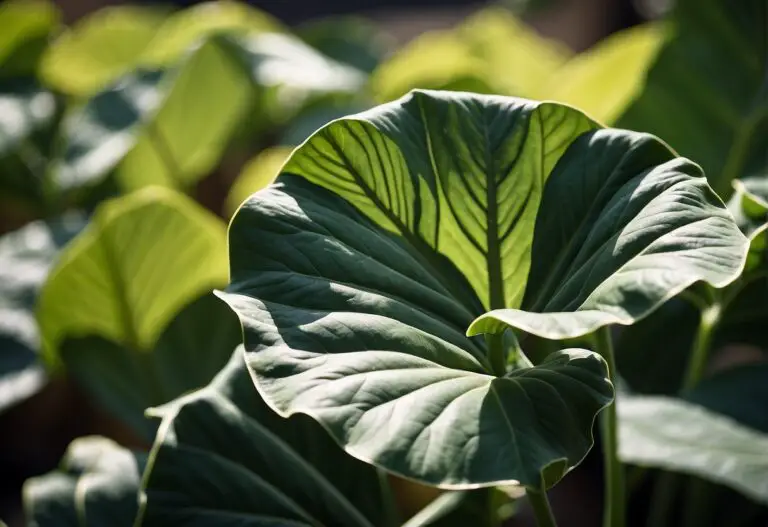Philodendron Luxurians: A Guide to Growing and Caring for this Stunning Plant
From Louise: I’m a gardening enthusiast, specializing in plant care and flower knowledge. I’m here to share my expertise and help with your gardening questions. Feel free to ask about Philodendron Plant care – I’ll respond within 24 hours!
Discover the impressive Philodendron Luxurians, a tropical houseplant known for its large, velvety, heart-shaped leaves that can reach up to 3 feet. Despite its exotic appearance, this Philodendron is easy to care for, requiring bright, indirect sunlight and moderate watering to avoid root rot.

With proper care, it can thrive for years, adding a touch of tropical elegance to your home. Whether you’re a seasoned plant enthusiast or a beginner, the Philodendron Luxurians is an excellent choice to bring the beauty of the tropics indoors.
Philodendron Luxurians

If you’re looking for a plant that will make a statement in your home, consider the Philodendron Luxurians.
With its large, velvety leaves and striking white veins, this tropical plant is sure to catch your eye. Here’s what you need to know about this beautiful plant:
Origins
Philodendron Luxurians is native to the rainforests of Central and South America, specifically in countries such as Colombia, Ecuador, and Peru [1].
It is a member of the Araceae family, which includes other popular houseplants such as Monstera deliciosa and Peace Lily [1]. This evergreen shrub can reach up to 20 inches in height and has inconspicuous white flowers with a red tinge at the apex [4].
Growth Habits
Philodendron Luxurians grow best in bright, indirect sunlight. Excessive sunlight will burn the plant’s leaves, so it’s best to place it in a north or eastern-facing window where it can receive morning and afternoon light. Only allow the Luxurians to get a maximum of 2 hours of bright direct sunlight per day.
When it comes to watering, it’s important to keep the soil moist but not waterlogged. Water the plant when the top inch of soil feels dry to the touch. Overwatering can lead to root rot, so be careful not to let the plant sit in standing water. The humidity level should be kept at around 60%.
Philodendron Luxurians can be propagated through stem cuttings. Simply take a cutting from the stem, making sure it has at least one leaf node, and place it in a pot filled with well-draining soil. Keep the soil moist and the cutting in a warm, bright location until it roots.
Overall, Philodendron Luxurians is a beautiful and relatively easy-to-care-for plant that will add a touch of tropical elegance to your home. With proper care, it can thrive for years to come.
Care and Maintenance

Philodendron Luxurians is a low-maintenance plant that is easy to care for, making it perfect for beginners. Here are some tips to keep your plant healthy and happy:
Lighting
This plant can tolerate various lighting conditions, from bright indirect to low light. However, it prefers bright, indirect light for optimal growth. Place the plant six feet away from a window to achieve optimal sunlight, and try to avoid placing it in direct sunlight.
If you must place it near a window, choose one that receives indirect light. It can also benefit from fluorescent lamplight to supplement the medium level.
Watering
When it comes to watering your Philodendron Luxurians, make sure the top 1 inch of soil is dry before watering again. Overwatering can lead to root rot, so it’s essential to let the soil dry out between waterings.
Water the plant thoroughly, and make sure the water drains out of the pot’s bottom. Avoid letting the plant sit in standing water.
Humidity
Philodendron Luxurians prefers high humidity levels, so it’s essential to keep the air around the plant moist.
You can increase humidity by placing a humidifier near the plant or by placing a tray of water near the plant. You can also mist the leaves regularly to keep them moist.
Fertilizer
Philodendron Luxurians doesn’t require frequent fertilization, but you can fertilize it once every three months during the growing season.
Use a balanced, water-soluble fertilizer, and dilute it to half-strength before applying it to the plant.
Pruning
To care for the leaves of Philodendron Luxurians, prune only the dying leaves. You can also trim the plant to control its size and shape. Make sure to use clean, sharp pruning shears to avoid damaging the plant.
Repotting
Philodendron Luxurians doesn’t require frequent repotting, but you can repot it once every two years if you notice the roots are becoming crowded. Use a well-draining soil mix, and make sure the new pot is only slightly larger than the old one.
By following these simple care and maintenance tips, you can ensure that your Philodendron Luxurians remains healthy and beautiful for years to come.
Propagation Methods

Philodendron Luxurians can be propagated using three different methods: soil propagation, water propagation, and air layering. Each method has its own pros and cons, and the success rate can vary depending on the conditions and the skill of the grower.
Soil Propagation
Soil propagation is the simplest and most likely successful method for beginners. Here are the steps to propagate Philodendron Luxurians using soil:
- Choose a healthy stem with at least one node and one leaf.
- Cut the stem just below the node using a clean and sharp knife or scissors.
- Dip the cut end into rooting hormone powder to encourage root growth.
- Plant the stem into a pot filled with well-draining soil, making sure the node is buried in the soil.
- Water the soil thoroughly and keep it moist but not waterlogged.
- Place the pot in a bright, indirect light location with a temperature range of 65-75°F (18-24°C).
- Wait for the roots to grow and new leaves to emerge.
Water Propagation
Water propagation is another popular method for propagating Philodendron Luxurians. Here are the steps to propagate Philodendron Luxurians using water:
- Choose a healthy stem with at least one node and one leaf.
- Cut the stem just below the node using a clean and sharp knife or scissors.
- Place the stem in a jar or vase filled with water, making sure the node is submerged in the water.
- Change the water every few days to prevent bacterial growth and provide fresh nutrients.
- Place the jar or vase in a bright, indirect light location with a temperature range of 65-75°F (18-24°C).
- Wait for the roots to grow and new leaves to emerge.
- Once the roots are at least 1 inch long, transplant the stem into a pot filled with well-draining soil.
Air Layering
Air layering is a more advanced method for propagating Philodendron Luxurians, but it can yield faster and more robust results. Here are the steps to propagate Philodendron Luxurians using air layering:
- Choose a healthy stem with at least one node and one leaf.
- Make a small cut on the stem just below the node using a clean and sharp knife.
- Wrap the cut area with moist sphagnum moss and cover it with plastic wrap.
- Secure the plastic wrap with a rubber band or tape.
- Wait for the roots to grow inside the moss ball.
- Once the roots are at least 1 inch long, cut the stem below the moss ball and transplant it into a pot filled with well-draining soil.
Remember that propagation takes time and patience. Be sure to provide your Philodendron Luxurians with the right conditions and care to ensure successful propagation.
Related Species
If you’re a fan of philodendron luxurians, you might be interested in exploring other species in the Philodendron genus. Here are a few related species to consider:
- Philodendron bipinnatifidum: Also known as the “split-leaf philodendron,” this plant has large, deeply lobed leaves that give it a tropical look. It’s a popular choice for indoor and outdoor landscaping, and can grow up to 10 feet tall in ideal conditions.
- Philodendron gloriosum: This species has velvety, heart-shaped leaves that are a deep green color. The leaves are often adorned with white veins, which create an eye-catching contrast. Gloriosum can be a bit finicky to care for, but its striking appearance makes it worth the effort.
- Philodendron erubescens: Commonly called the “pink princess philodendron,” this plant has green leaves with pink variegation. It’s a relatively new cultivar, but has quickly become a favorite among collectors. Erubescens can be a bit tricky to find, but its unique coloring makes it worth the search.
- Philodendron hederaceum: This species is also known as the “heartleaf philodendron,” and is a popular choice for hanging baskets due to its trailing growth habit. The leaves are a bright green color with a glossy finish, and the plant is relatively easy to care for.
No matter which species you choose, philodendrons are a great way to add a touch of tropical flair to your home or garden. Just be sure to research each species’ specific care requirements, as they can vary widely.
Garden Specialist Tips
If you want to grow Philodendron Luxurians and keep it healthy, here are some tips from garden specialists that you can follow:
- Lighting: Philodendron Luxurians can tolerate various lighting conditions, but it prefers bright, indirect light for optimal growth. Place the plant six feet away from a window to achieve optimal sunlight, and try to avoid placing it in direct sunlight. If you must place it near a window, choose one that receives indirect light. It can also benefit from fluorescent lamplight to supplement the medium level.
- Temperature: Philodendron Luxurians prefers warm temperatures, ideally between 65°F and 80°F (18°C to 27°C). It does not tolerate cold temperatures well and should avoid drafts.
- Watering: This plant prefers consistently moist soil but not soggy. Water your Philodendron Luxurians when the top inch of soil feels dry to the touch. Overwatering can lead to root rot, so be careful not to overwater.
- Soil: Philodendron Luxurians prefers well-draining soil that is rich in organic matter. You can use a mixture of peat moss, perlite, and potting soil to create a well-draining soil mix.
- Fertilizing: Fertilize your Philodendron Luxurians once a month during the growing season with a balanced, water-soluble fertilizer. Be sure to dilute the fertilizer to half strength to avoid burning the plant’s roots.
- Pruning: Prune your Philodendron Luxurians to control its size and shape. You can also remove any yellow or damaged leaves to promote new growth.
By following these tips, you can ensure that your Philodendron Luxurians stays healthy and thrives in your home or garden.
Frequently Asked Questions
What is the difference between Philodendron luxurians and Philodendron lynamii?
Philodendron luxurians and Philodendron lynamii are both tropical plants with similar characteristics.
However, there are some differences between the two. Philodendron luxurians has larger and more elongated leaves compared to Philodendron lynamii. Philodendron luxurians also has a more upright growth habit, while Philodendron lynamii has a more climbing growth habit.
How much does a Philodendron luxurians cost?
The cost of a Philodendron luxurians can vary depending on where you buy it from and the size of the plant.
On average, a small Philodendron luxurians plant can cost around $20 to $30, while a larger plant can cost up to $100 or more.
Is Philodendron luxurians a climbing or crawling plant?
Philodendron luxurians is a crawling plant that can grow up to 6 feet in length. It does not climb like some other Philodendron species, but it can be trained to grow up a trellis or other support.
What are some unique characteristics of Philodendron luxurians chocolate?
Philodendron luxurians chocolate is a variety of Philodendron luxurians with dark green leaves that have a chocolate-colored underside.
This variety also has a more compact growth habit compared to the regular Philodendron luxurians.
How do you care for Philodendron luxurians?
Philodendron luxurians is a relatively easy plant to care for. It prefers bright, indirect light and well-draining soil.
Water the plant when the top inch of soil feels dry to the touch. Philodendron luxurians also benefits from regular fertilization during the growing season.
What is the most expensive type of Philodendron?
The most expensive type of Philodendron is the Philodendron pink princess. This plant can cost hundreds or even thousands of dollars due to its rarity and unique variegation.






